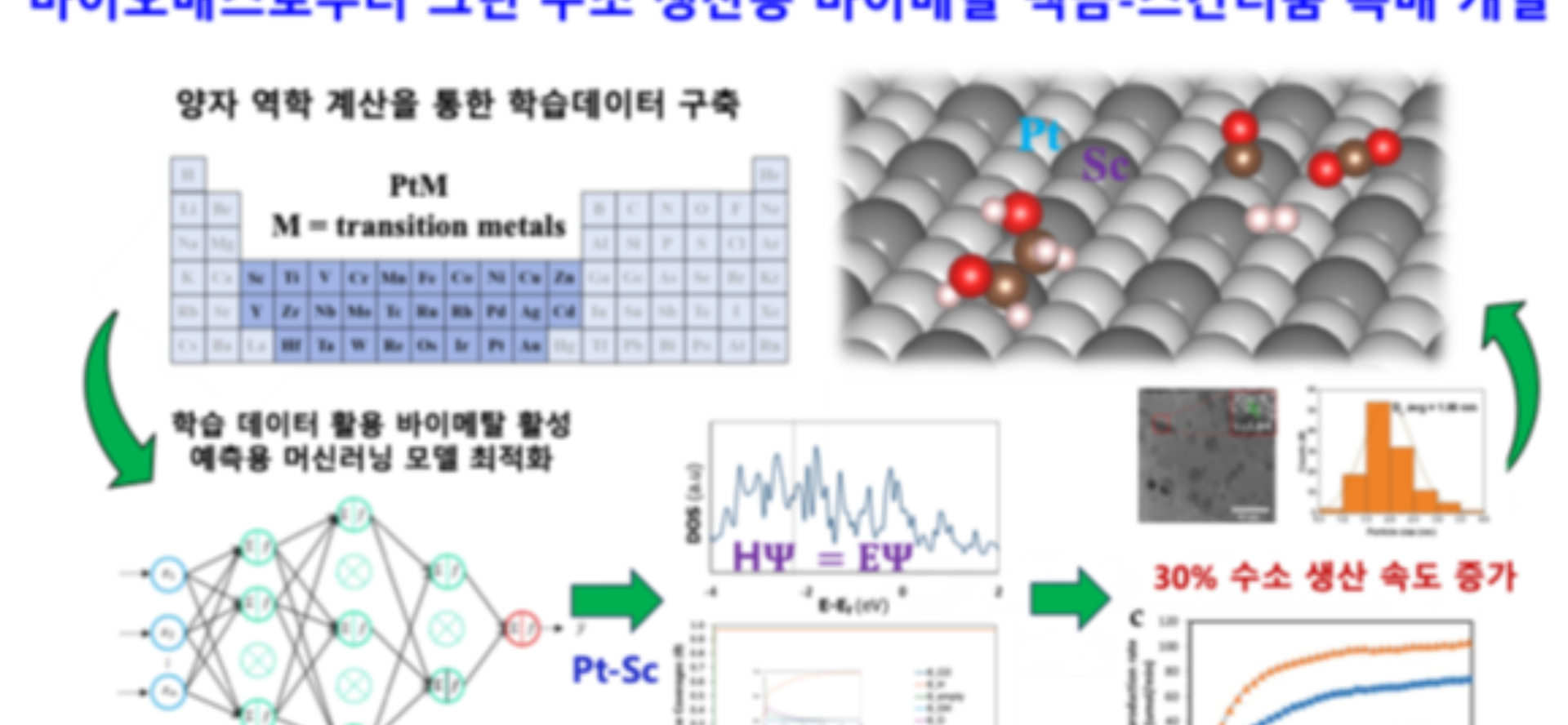INHA University

A research team in computational catalysis and nanomaterials science led by Professor Ham Hyeong-cheol of the Department of Chemical Engineering, together with a research team from the Korea Institute of Science and Technology (KIST), has developed a liquid-phase reforming bimetallic catalyst for green hydrogen production using quantum-mechanical training data and artificial-neural-network models.
The joint research team trained an artificial-neural-network (AI) model with quantum-mechanics calculation data and developed a technology that can predict and screen the reactivity of bimetallic catalysts at ultra-high speed.
Through this, they rapidly identified high-activity candidates among numerous rapid combinations and clarified, at the atomic level, the causes of catalytic-activity changes, presenting new guidelines for catalyst design.
Based on these guidelines, the team developed a new catalyst capable of producing green hydrogen from biomass, thereby improving the efficiency of eco-friendly hydrogen-production processes. Green hydrogen is regarded as a key fuel for carbon-free clean energy.
Hydrogen production using discarded biomass is an eco-friendly process with nearly zero carbon emissions, but its commercialization has been limited due to the low efficiency of catalysts that accelerate the reaction.
The research team developed an artificial-neural-network model capable of predicting catalyst activity for hydrogen production from ethylene glycol, a type of biomass.
Through the neural network, they identified a bimetallic catalyst combining platinum (Pt) and scandium (Sc), and confirmed that this combination exhibits much higher reactivity and selectivity than existing catalysts.
The team precisely analyzed the electronic structure of the bimetallic catalyst and systematically evaluated how catalyst properties influence reactivity through modeling that combined quantum-mechanics calculations and machine learning.
As a result, they confirmed that a ligand effect occurs in which platinum and scandium exchange electrons with each other, causing the electronic structure to change in a unique way. This enhances the reaction that produces hydrogen while suppressing unnecessary by-product reactions, greatly improving hydrogen-production efficiency.
In addition, through collaborative experiments with the research team of Dr. Son Hyun-tae and Dr. Choi Sun-hee of KIST’s Hydrogen Fuel Cell Research Center, the Pt–Sc bimetallic catalyst identified theoretically was actually synthesized, analyzed, and evaluated. The results proved that its hydrogen-production rate improved by about 30% compared to existing catalysts — successfully achieving a high-efficiency liquid-phase reforming catalyst and conclusively validating the research outcomes.
Professor Ham Hyeong-cheol said, “By using machine learning and quantum-mechanics calculations, we were able to elucidate the mechanism of green hydrogen production via biomass decomposition and significantly shorten the development timeline for multi-component metal catalysts,” adding, “Going forward, we will focus our research capacity on raising catalyst performance to a commercially viable level.”